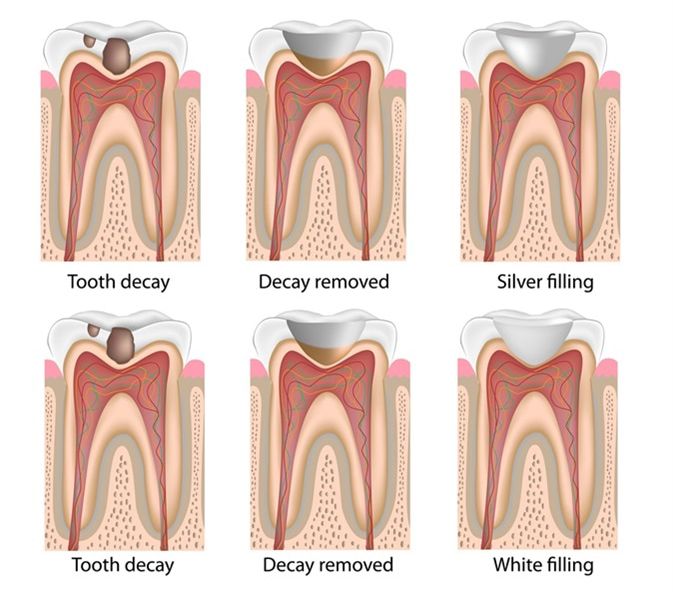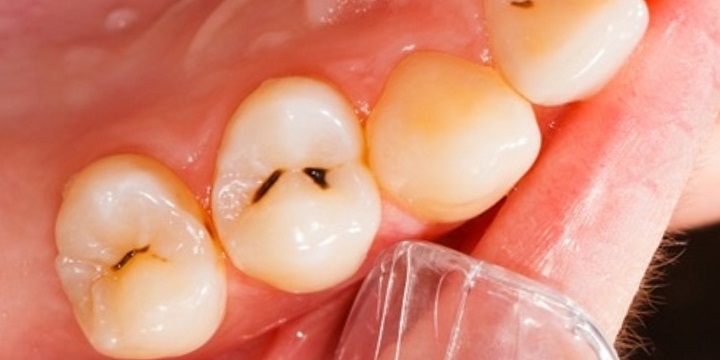
Dental Fillings
A dental filling is used to restore a decayed tooth to its normal function and shape. Restoring the tooth to its normal form, shape, and relative size are needed for ease of chewing, speaking, and preventing further damage, decay, or consequently, tooth loss.
The material used for a dental filling is a composite resin that is similar to the shade as the patient’s tooth to match the tooth’s natural appearance.
Procedure for a Dental Filling
The dental filling procedure involves several steps, starting with a thorough examination and diagnostic records to assess the extent of the decay and determine if a direct composite filling is suitable for the tooth. Once the tooth is prepared, the decayed parts are removed, and the tooth is cleaned thoroughly to ensure proper adhesion of the filling material.
Diagnostic Records
The dentist will closely inspect the decay on the tooth, and with the aid of diagnostic tools such as radiographs, determine if the tooth is a good candidate for direct composite fillings.
Removal of Tooth Decay
Depending on the depth and extent of the cavity, a local anesthetic may be applied to reduce the sensitivity and make the procedure more pleasant and comfortable.
Afterward, all the decayed parts and affected areas of the tooth will be thoroughly cleaned and properly prepared to receive a filling material.
Filling and Polishing of the Tooth
Then, a composite filling material is used to fill and seal the cavities in the tooth. The filling material will be shaped, carved, and color-matched resembling the natural look of the patient’s tooth.
After applying the dental filling, a light curing machine is used to cure and harden the composite filling material. Lastly, the dentist will trim, adjust the bite, and polish the tooth, completing the entire procedure!

Signs That You Need a Dental Filling
There are several signs that indicate if you need a dental filling. These signs include the following:
- Tooth decay
- Discolored tooth surface
- Chipped-off tooth
- Worn out or cracked old dental fillings
- Sensitivity to hot and cold foods
By addressing tooth decay with dental fillings, individuals can maintain their oral health, preserve their natural teeth, and avoid more extensive and costly dental treatments in the future. Regular dental visits and proper oral hygiene practices are essential in preventing tooth decay and ensuring a healthy, beautiful smile for years to come.
What You Need To Know About Dental Fillings
A filling is a way to restore a tooth damaged by decay back to its normal function and shape. When a dentist gives you a filling, he or she first removes the decayed tooth material, cleans the affected area, and then fills the cleaned out cavity with a filling material. By closing off spaces where bacteria can enter, a filling also helps prevent further decay. Materials used for fillings is a composite resin that are matched to be the same color as your teeth and therefore used where a natural appearance is desired. The ingredients are mixed and placed directly into the cavity, where they harden. Composites may not be the ideal material for large fillings as they may chip or wear over time.
Determining If You Need A Filling
Your dentist may use several methods to determine if you have tooth decay (caries), including:
Observation
Some discolored spots on your teeth may indicate decay, but not all of them. Your dentist may use an explorer, a metal instrument with a sharp tip, to probe for possible decay. Healthy tooth enamel is hard and will resist pressure by the explorer. Decayed enamel is softer. The instrument will stick in it slightly.
X-rays
X-rays can show decay developing in the enamel on the sides of teeth where they come together, as well as in the dentin that lies under the enamel. Current fillings or other restorations also may block the view of decay.
Worn out fillings
Cracked, worn out old fillings
Tooth Sensitivity
Sensitivity to hot and cold food and drinks




